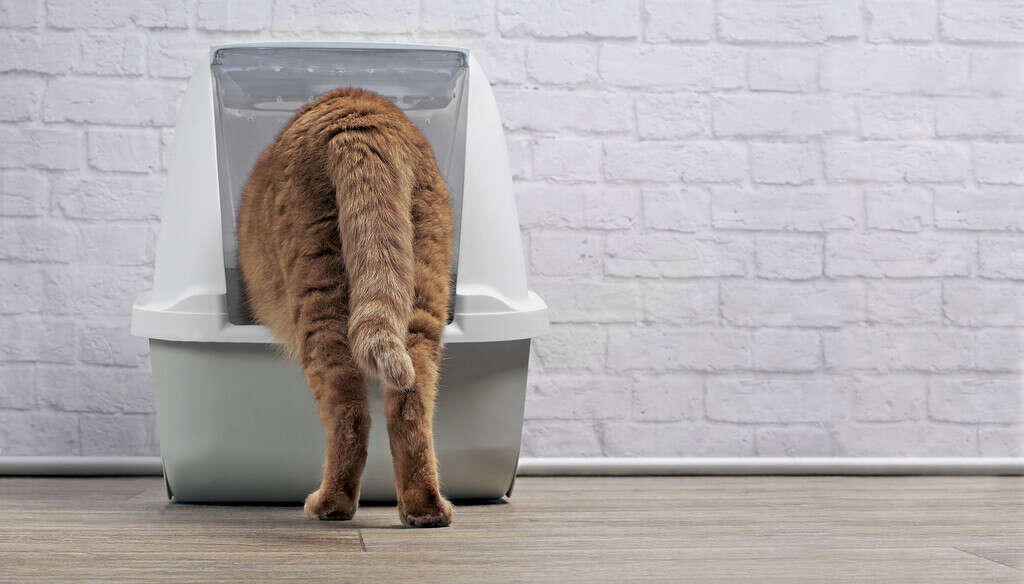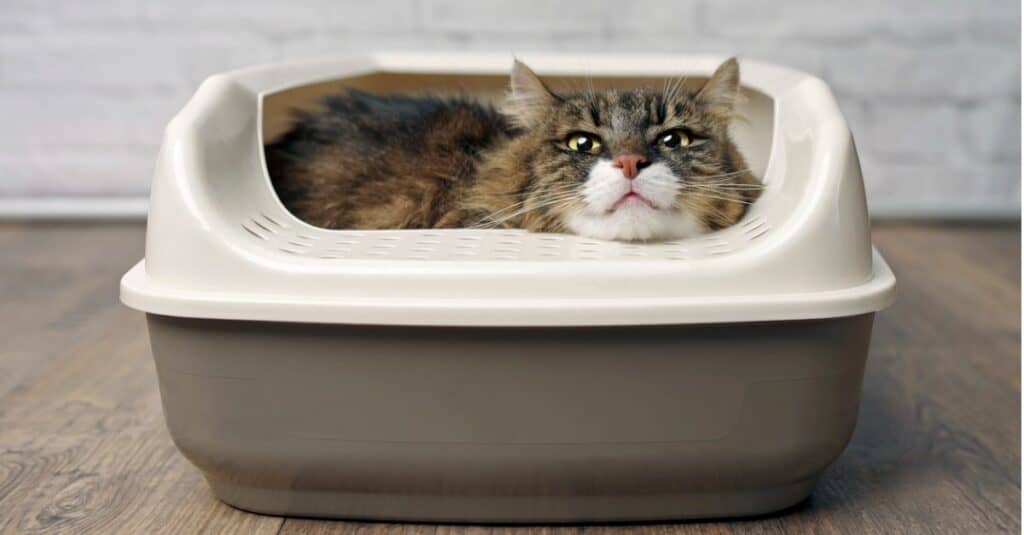The term doesn’t refer specifically to one condition; rather, feline lower urinary tract disease (FLUTD) is more of an encompassing term that describes a variety of bladder and urethra problems in cats. Feline lower urinary tract disease doesn’t occur at a certain age; however, certain cats are more susceptible to developing FLUTD, including kitties with a sedentary lifestyle. Learn more about FLUTD, including potential causes, symptoms, and treatments!
What Causes FLUTD?
There may be several causes of FLUTD like obesity and lack of exercise. Sometimes, your cat’s diet can be an issue, which would require a shift. However, in many cases, stress is a factor. What may seem like a simple seasonal furniture change for you may trigger immense stress for your cat. Cats can be quite persnickety, which means they may react strongly to seemingly minute changes. A new candle scent in the home, a guest inhabiting your spare room, or even new sounds in the home can trigger a stress episode for your cat. For example, researchers linked stress to bacterial cystitis (BC) and feline interstitial cystitis (FIC), which both fall under the FLUTD umbrella.
Types of FLUTD

There are different types of FLUTD, including bladder stones and urinary tract infections.
©Lightspruch/iStock via Getty Images
Bladder Stones
Also known as urolithiasis, bladder stones may occur in cats. Causes include genetics, diet, and infection. In some cases, bladder stones may be life-threatening. However, for some cats, the condition may present with pain only. Bladder stones, when left untreated, may lead to urethral obstruction, which is deadly.
Feline Idiopathic Cystitis
When there are no stones or bacteria present, but the bladder is inflamed, the condition is called feline idiopathic cystitis (FIC). This condition can also result in urethral obstruction.
Urinary Tract Infection
This is the most common condition cats experience. Urinary tract infections (UTIs) occur when bacteria are present in the urethra or bladder. This condition occurs more frequently in female cats and may be a result of poor grooming due to obesity as well as other factors like diabetes.
Bladder or Urethra Cancer
Although rare, bladder or urethra cancer may develop in cats presenting with other symptoms. To rule out the disease, a veterinarian must order a full workup.
FLUTD Symptoms

FLUTD symptoms present in various ways, from obvious crying at the litter box to straining and even blood in the urine.
©iStock.com/Lightspruch
Crying During Urination
Being that cats tend to hide their pain and discomfort, when a cat is crying out in pain, you know it’s serious. If your kitty is in the litter box and yelping out in pain while urinating or attempting to urinate, get them to a veterinary hospital right away.
Straining
If your cat is having trouble urinating, you may notice that they strain while trying to go. You may also notice that they circle the litter box, getting in and out without excreting waste. If you notice this type of behavior, your kitty may be dealing with an underlying bladder or urethra issue.
Blood in Urine
If your cat has FLUTD, you may also notice blood in the urine. This is why it’s critical to keep tabs on your kitty at home, from the litter box to their food bowl. You can spot any changes quickly, which can prevent health conditions from worsening over time.
Licking Genital Area
Cats groom themselves, including their genital area, so this may not seem unusual. But when your kitty is preoccupied with licking their genital area, they may be trying to self-soothe. Take note of this behavior and any others to communicate the symptoms with your vet when you go in for a check-up.
Litter Box Mishaps
If your kitty has started urinating outside the litter box, they may have FLUTD. When cats excrete waste outside of their designated environment, they are often communicating something to you. In some cases, it’s as simple as, “Hey, please clean my litter box.” But in other cases, they may be trying to tell you that they’re sick and need your help.
Treatment of FLUTD
Dr. Colleen Wallace, a cat-only vet at Cozy Cat Veterinary Hospital in Raleigh, NC, told A-Z-Animals, “The treatment of FLUTD depends on the cause. If it is due to crystals in the urine, switching to a prescription urinary diet will prevent crystals from forming. A bacterial infection is more common in older cats and would be treated with antibiotics. Lastly, inflammation of the bladder can cause pain and is caused by stress. If this is the case, changing the environment, using pheromone diffusers, and possibly calming treats or food can be helpful. I have found that non-steroidal anti-inflammatories (NSAIDs) are very effective in treating bladder inflammation.”
The photo featured at the top of this post is © Daria Kulkova/iStock / Getty Images Plus via Getty Images
Thank you for reading! Have some feedback for us? Contact the AZ Animals editorial team.







